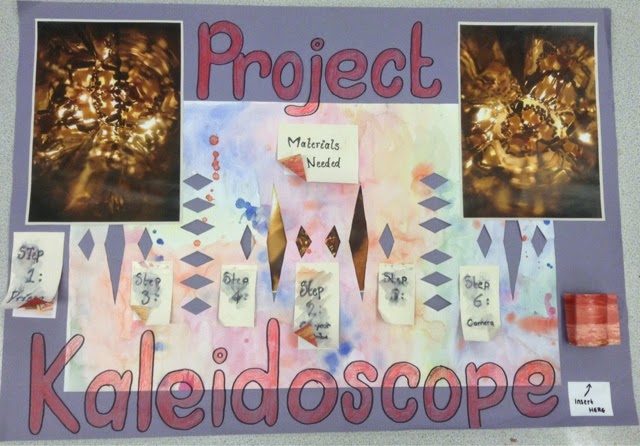As a starting point for my title 'Reflections' and as a project for 'Art in Woodstock' my class and I designed and created usable kaleidoscopes.
To create these involved a series of steps, some complicated. I devised a series of written instructions including pictures, which can be seen in my art journal:
I created an A1 page on the project and used inspiration of tessellation and symmetry to create an interesting background. I have written down the steps underneath flaps for the user to read.
By following my step-by-step guide, I have been able to create a small Kaleidoscope. I have photographed it from many angles in order to show the viewer the true nature of the product. I have chosen a variety of beads in a variety of shapes and colours to fill the bottom of my kaleidoscope as I wanted to create an almost fluorescent reflection.
Looking at my photographs, it is possible to see the decoration on the outside of my Kaleidoscope where I have used purple beads to form a crest. I have taken these photographs myself using a digital Nikon DSLR camera and a light projector:
I like the reflective effect that my kaleidoscope gives. The mirrored surfaces project and tessellate the surrounding beads. It looks like a tunnel of light, an explosion of colour.
To develop this technique further, I would like to draw from a mirrored surface to see how a reflected image would look using pencil and my own imagination. This brings me onto an artist who draws from reflective surfaces. M.C. Escher.
 This is another example of observational drawing in the style of M.C. Escher. I like Escher's attention to detail and the simplicity of his ideas yet the complication of his drawing. I have taken the idea of reflection and used it in the background of my A1 page by reflecting the title.
This is another example of observational drawing in the style of M.C. Escher. I like Escher's attention to detail and the simplicity of his ideas yet the complication of his drawing. I have taken the idea of reflection and used it in the background of my A1 page by reflecting the title. 













